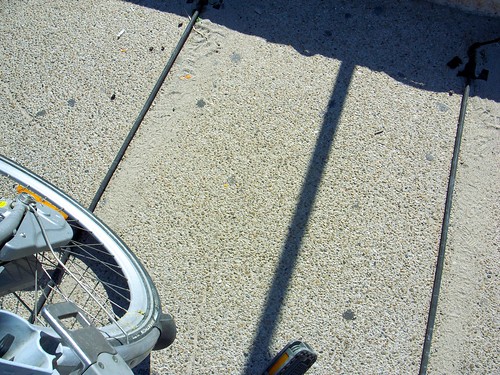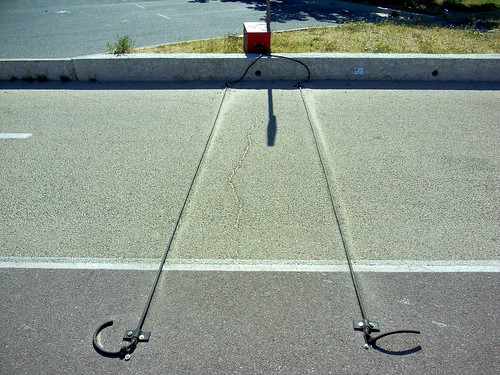 A quantification device encountered on a bike path in Marseille last sunday when riding "le vélo" (that's how they call the bike rental system down there). Two intriguing pieces of strings connected to a metal box. As an aside, the warning sign on top of it could even be re-used by angry punk-rock guitar players if they wish to start a new band.
A quantification device encountered on a bike path in Marseille last sunday when riding "le vélo" (that's how they call the bike rental system down there). Two intriguing pieces of strings connected to a metal box. As an aside, the warning sign on top of it could even be re-used by angry punk-rock guitar players if they wish to start a new band.
This artifact led me thinking about how measurement devices could take different shape.

On one side you can have small and portable objects like pedometers or fancy nike+ shoes. You just take the damned thing and put it in your pocket or simply sport it while walking/running. It's individual, each human who like to have a reflective account of his/her own movement use it. And that's all good: as a user you can access the data and reflect on them. Of course, there are different levels of access ranging from reading them on the screen to exporting them in a fancy spreadsheet to run statistical computations.
On the other side, it's also possible to have measurements infrastructures like the one represented above. It's collective and generally put in place by a city stakeholder (be it a transportation company/institution or the city council). In this latter case, the information is less accessible to the users: it sits rights there in the weird box and some human comes uploading them before parsing the whole thing on the 7th floor of a building owned by his company. Obviously, the granularity of the information collected by this device is way different than our first category. In addition, the aim is also distinct. The point here is to get some insights about the number of cyclists riding on this bike lane. For the record, this is the "sensable city" from the 20th century: situated data-capture at its best, then-turned into a tool for decision-makers about how this place is "used" by people who ride bikes.
Why do I blog this? categorizing different measurement devices is intriguing and contrasting the approaches.
